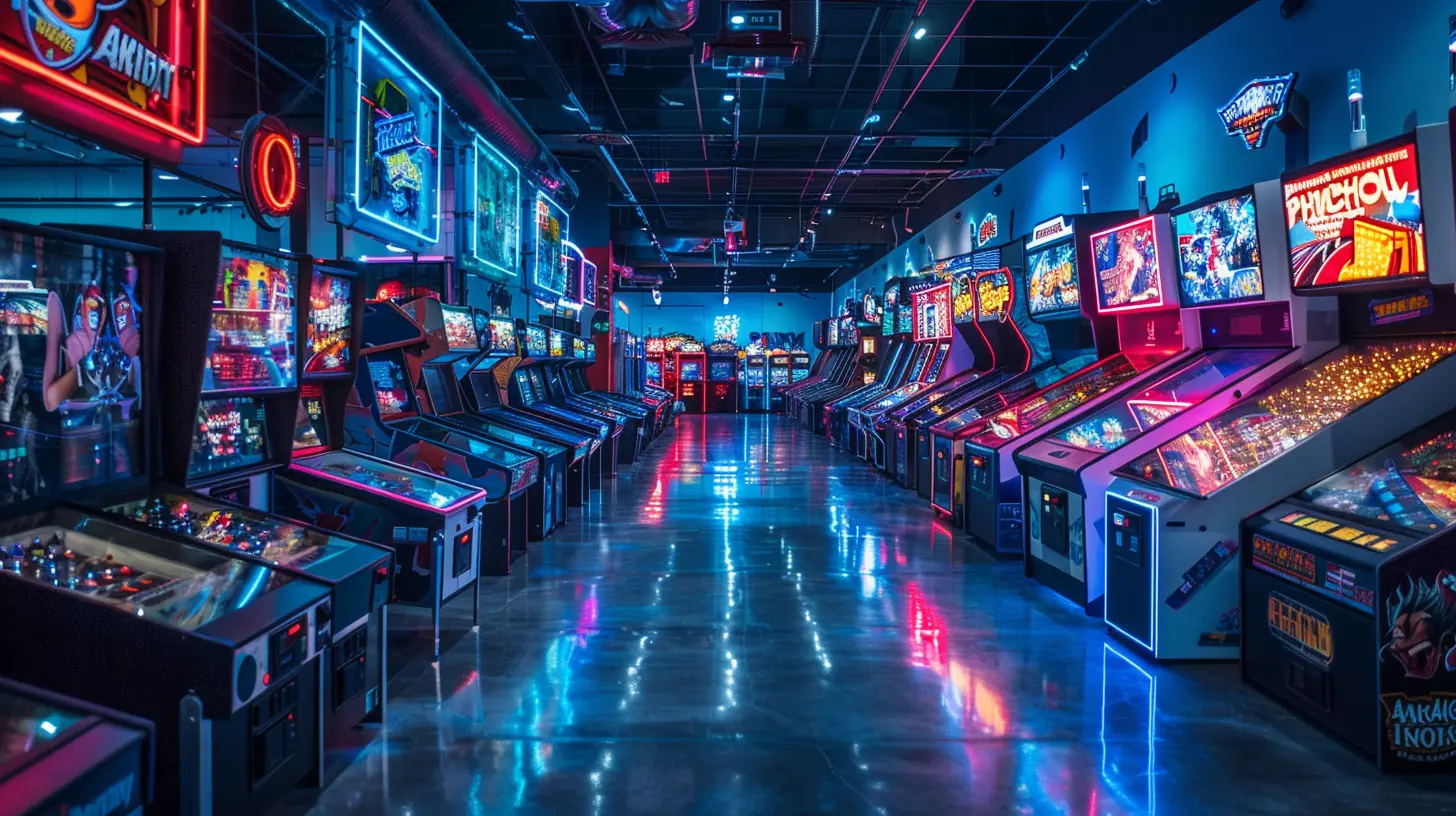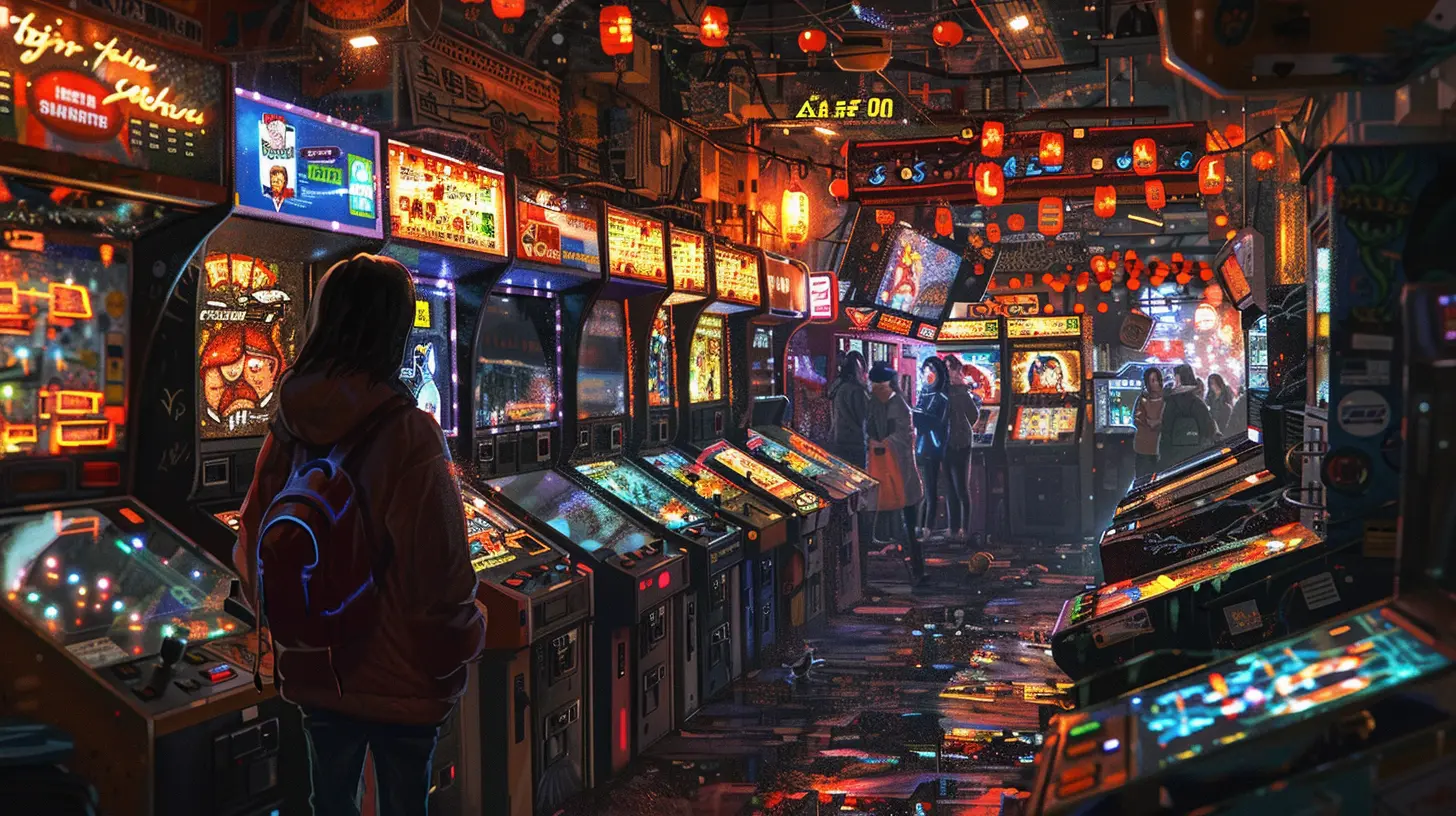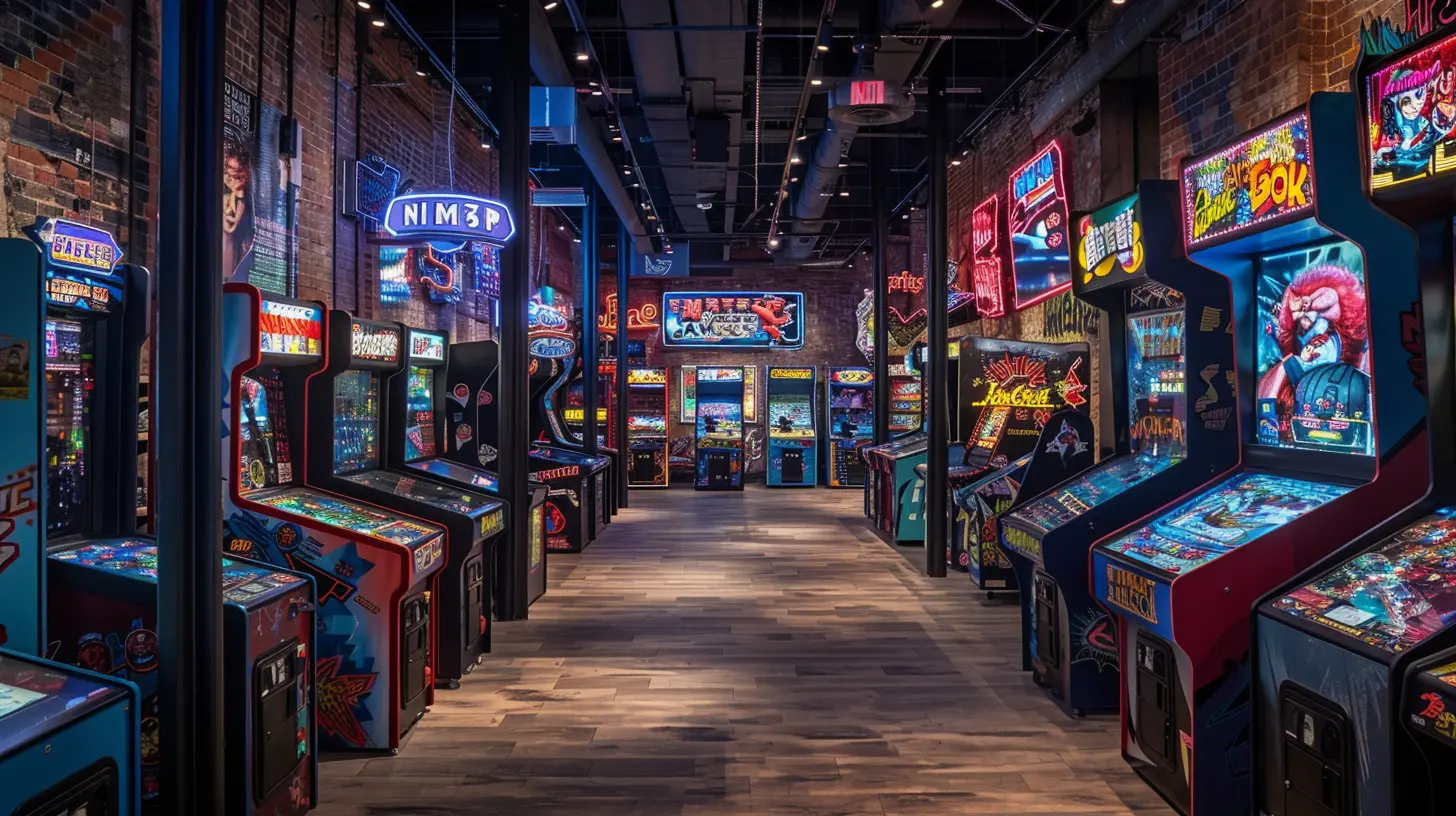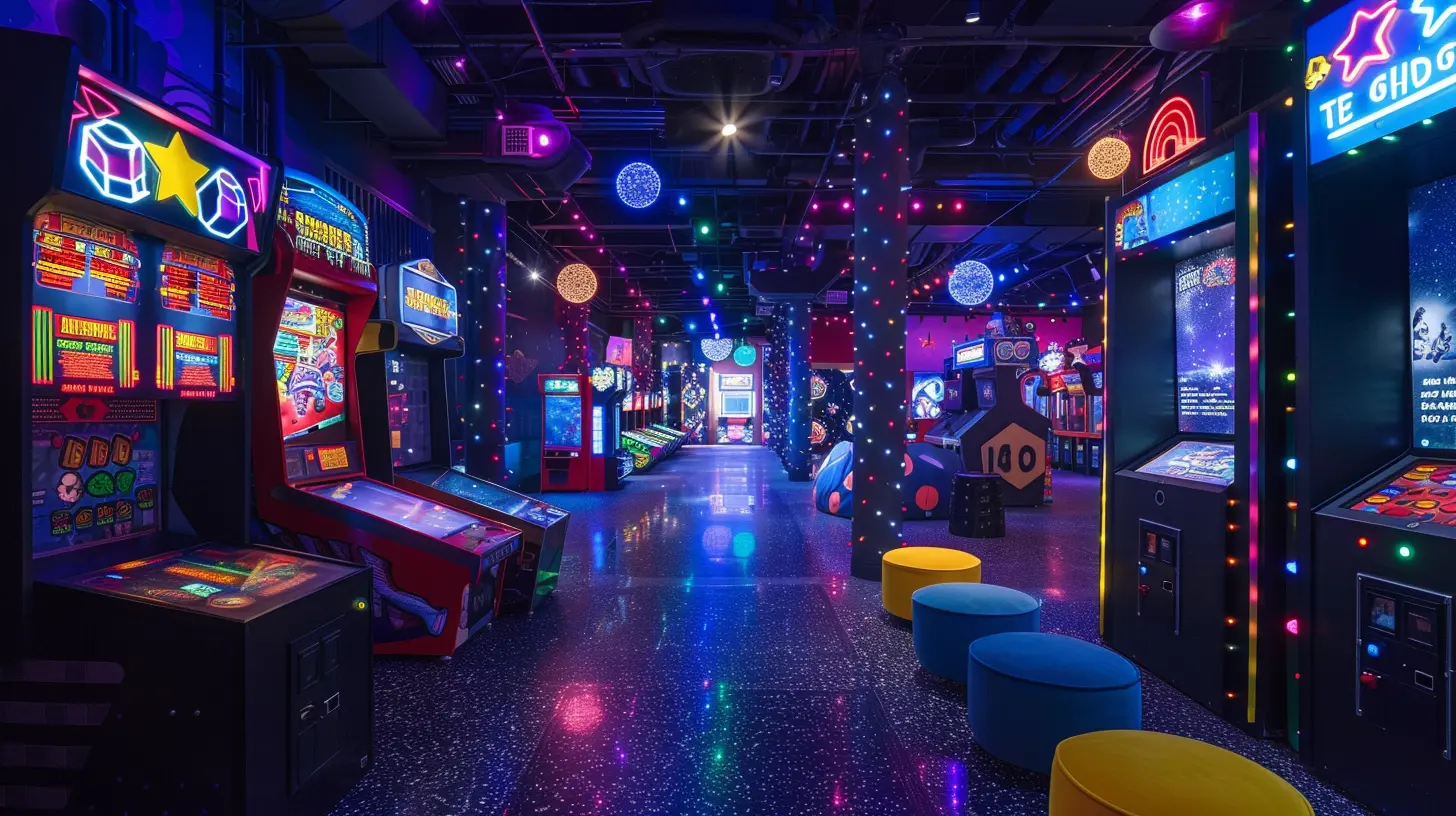How Arcades Are Inspiring the Indie Game Revolution
11 July 2025
Remember the smell of popcorn drifting through the air, the neon lights flickering like they were winking at you, and the sweet, sweet sound of insert coin to continue? Yep, we’re talkin’ arcades — those glorious temples of flashing screens, relentless button mashing, and high-score glory. While some might say arcades fizzled out like a soda left open overnight, they’re actually alive and well—as spiritual mentors to the scrappy, creative world of indie game development.
You might be wondering, “What do pixelated cabinets from the '80s have to do with today’s indie gaming scene?” Oh, my joystick-loving friend, everything. Strap in, grab your Mountain Dew, and let’s button-mash our way through how arcades are secretly (or not-so-secretly) powering the indie game revolution.
Back to the Pixelated Future
Okay, first things first: let’s acknowledge the elephant in the room. Arcades aren’t exactly on every street corner anymore. Most kids today know “arcade” as that screen they click away from when a mobile game loads an ad. But for indie developers, arcades represent something much deeper than nostalgia.They’re like the wise, old senseis of gaming: full of simple-yet-brilliant design, zero fluff, and a whole lotta fun.
Short, Sweet, and Addictive Gameplay
Indie games, much like classic arcade hits, are masters of getting to the point. Think about it—ever played Celeste, Cuphead, or Enter the Gungeon? These games don’t need 80 hours of your life and a PhD to understand. They’re fast, fun, and punchy—just like Galaga or Pac-Man. It's the gaming equivalent of a shot of espresso: concentrated, bold, and almost always followed by a jittery “Let’s go again!”Arcades taught us less is more—and indie devs? Yeah, they took that lesson to heart.
The Art of Pixel Perfection
There’s something undeniably charming about pixel art. It’s like the gaming version of vinyl records—scratchy in the best way possible. And indie devs have fully embraced this retro aesthetic.Why Go Pixel When You Can Go 4K?
Because pixels have personality! They’re quirky. They’re colorful. And they’re surprisingly expressive for being literal squares. Classic arcade games didn’t need photorealism—they told epic stories with 8-bit faces and chiptune soundtracks. Now, games like Undertale, Shovel Knight, and Dead Cells are bringing that same homemade charm into the modern era.In a world drowning in hyper-realistic faces and 300GB game installs, a throwback pixel palette is like a warm, glitchy hug.
Sound Effects That Slap
You know what’s better than a full orchestral soundtrack? A beep that makes your ears dance and your fingers twitch. Arcade games were masters of sound design. Every jump, every power-up, every Game Over had a distinct auditory flavor.The Soundtrack of the Indie Soul
Indie developers seem to get it—it’s not always about how complex the music is; it’s about how memorable it is. Games like Hotline Miami slap so hard with their retro-inspired synthwave tracks, they’ll make you want to grow a mullet and buy a jacket with shoulder pads.Sound isn’t just background noise—it’s a love letter to the arcades of yore. Each chime, click, and wub-wub connects past and present like a mixtape from your childhood crush.
Couch Co-Op Is the Cool Kid Again
Multiplayer in the arcade era wasn’t about usernames and lag complaints. It was shoulder-to-shoulder brawls in Street Fighter II or tag-teaming TMNT with your best bud squealing “COWABUNGA!” at the top of your lungs. Physical presence, trash talk, and actual high-fives. Glorious.Indie Devs Are Bringing Friendship (and Rivalry) Back
Guess what? Indie games are making couch co-op cool again. Titles like Overcooked, TowerFall Ascension, and Nidhogg are specifically designed to be played with someone sitting right next to you on the couch, probably stealing your snacks and yelling when you accidentally throw their character into a pit.Arcades taught us games are meant to be shared. And indie creators? They’ve turned shared chaos into a playable art form.
Simplicity Is the Ultimate Power-Up
Let’s face it—modern AAA games are beautiful, but sometimes firing one up feels like you're clocking into work. Updates, tutorials, skill trees the size of family trees… whew. But arcade games? You just played. You didn’t need a guide—just reflexes, maybe a pocketful of quarters, and a solid strategy (often called “button mashing”).Indie Games Keep It Real (and Real Fun)
Indie devs often aim for that same pick-up-and-play magic. You boot up Downwell, Super Crate Box, or Katana ZERO, and boom—you’re in the action in seconds. No cutscene to sit through. No 15-minute walkthrough to understand the narrative. Just jump in, fail gloriously, and repeat until greatness is achieved.This thirst for immediacy and fun is straight from the arcade rulebook—written in neon ink and smeared with Cheeto dust.
DIY Spirit: Then and Now
Here’s the kicker: arcade developers were the original indie renegades. In the early days, it wasn’t huge teams doing the work—it was a handful of tech wizards and artists who threw together code in basements and garages, driven entirely by passion and a bit of caffeine-induced madness.The Indie Dev Ethos Is Basically Arcade Dev 2.0
Today’s indie studios aren’t sprawling empires. They’re small teams (sometimes just one brilliant lunatic) with big dreams. They take risks, break rules, and get weird in the best way. Just like the arcade pioneers.So in a way, nothing’s changed. The indie scene is powered by the same rebellious, DIY energy that made Defender and Donkey Kong possible. It’s the circle of (gaming) life, but with more pixels and probably less sleep.
Cabinets to Codebases: Hardware Inspiration FTW
Let’s not forget the hardware. Arcade machines were as much art as they were tech. Those cabinets had personality. They lit up. They rumbled. They demanded attention. And their influence still echoes today.Physical Feels in the Digital World
Indie devs have taken that sensory-focused design and run with it. Think motion controls, haptic feedback, and game worlds that react to every one of your clumsy inputs. Or how about custom-built arcade-style controllers for games like Samurai Gunn or Duck Game? Indie devs blur the lines between digital and physical, creating experiences that feel real, even when you’re just smashing a keyboard in your PJs.And with platforms like itch.io supporting experimental and hardware-inclusive projects, the arcade cabinet aesthetic is getting its second wind—with indie flair, of course.
Nostalgia: The Secret Sauce
Ah yes, the not-so-secret weapon. Nostalgia. It’s the flavor enhancer of the indie game revolution, and it tastes like your first time landing that pixel-perfect jump in Mega Man after 300 tries.Nostalgia Isn’t Just a Marketing Crutch
Sure, it sells—who doesn’t wanna relive those junior-high-after-school-vibes? But it also inspires. For every indie dev reminiscing about late nights in the arcade, there’s a game brimming with that passion.Games like The Messenger or Axiom Verge don’t just reference the old days—they remix them like a DJ at a retro rave. They take what was great and add modern flavor, making them both a tribute and a triumph.
Indie Game Events = Arcade Vibes 2.0
Let’s talk crowds. Arcades were social spaces. Loud, chaotic, and electric. Today? Indie game events and festivals are channeling that same chaotic-good energy.Local Multiplayer + Beer + Indie Devs = Pure Magic
Pop into events like PAX, IndieCade, or any pop-up indie arcade night, and you’ll feel it. That same adrenaline buzz. People crowding around a screen, hooting and hollering, trying to one-up each other in a wacky indie title you’ve never seen before. It’s alive. It’s wild. It’s everything arcades used to be—resurrected with craft beer in hand.The Revolution Will Be Coin-Operated (Sort Of)
So what do we get when we plug the arcade mindset into the indie game engine?We get games that are bold, experimental, fun-as-heck, and genuinely different from the polished, mass-produced AAA buffet. We get developers who care more about player experience than market trends. And we get a generation of gamers who understand that skill, art, and joy can live together in a pixelated 2D platformer with a kickin’ soundtrack.
The arcade spirit never died—it just respawned in the indie scene, now with more snark and better graphics.
Final Thoughts: Insert Coin to Continue the Indie Dream
Next time you fire up an indie game that makes you laugh, rage, or accidentally stay up until 3am, tip your hat to arcade culture. Without those coin-sucking, button-bashing machines, we wouldn’t have this incredible buffet of creative gaming goodness today.So... how are arcades inspiring the indie game revolution?
One pixel, one chiptune, and one lovingly crafted game at a time.
all images in this post were generated using AI tools
Category:
Arcade GamesAuthor:

Aurora Sharpe
Discussion
rate this article
2 comments
Celine McVey
Love this article! It's amazing how the nostalgia of arcades is fueling the creativity of indie games. Here’s to the vibrant spirit of innovation and fun! Can’t wait to see what’s next in this revolution!
November 9, 2025 at 3:53 PM

Aurora Sharpe
Thank you! I completely agree—arcades are a profound source of inspiration for indie developers. Exciting times ahead!
Anastasia Hensley
Arcades, with their vibrant communities and innovative spirit, remind us that creativity thrives in shared spaces. They spark inspiration for indie developers, pushing the boundaries of gaming artistry and experience.
July 24, 2025 at 3:01 PM

Aurora Sharpe
Thank you! I completely agree—arcades foster creativity and collaboration, playing a crucial role in inspiring indie developers to innovate and redefine gaming experiences.


